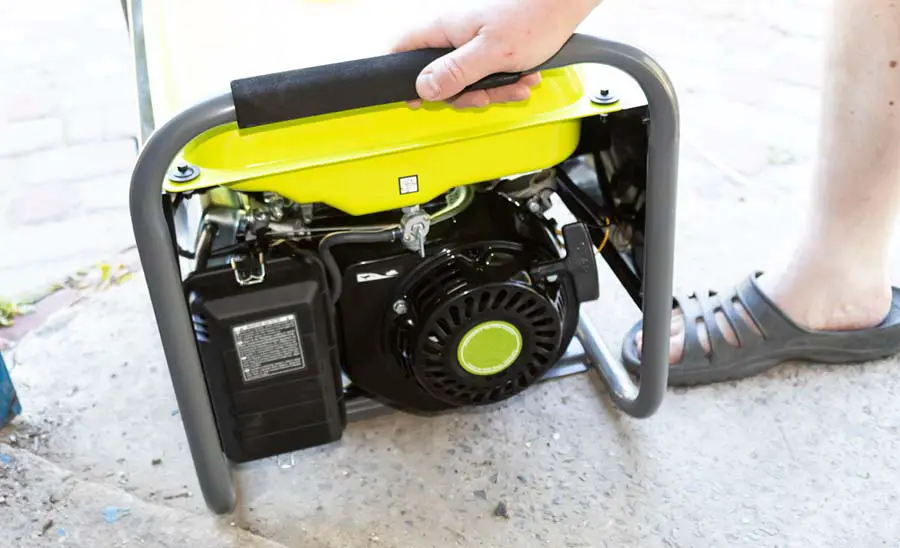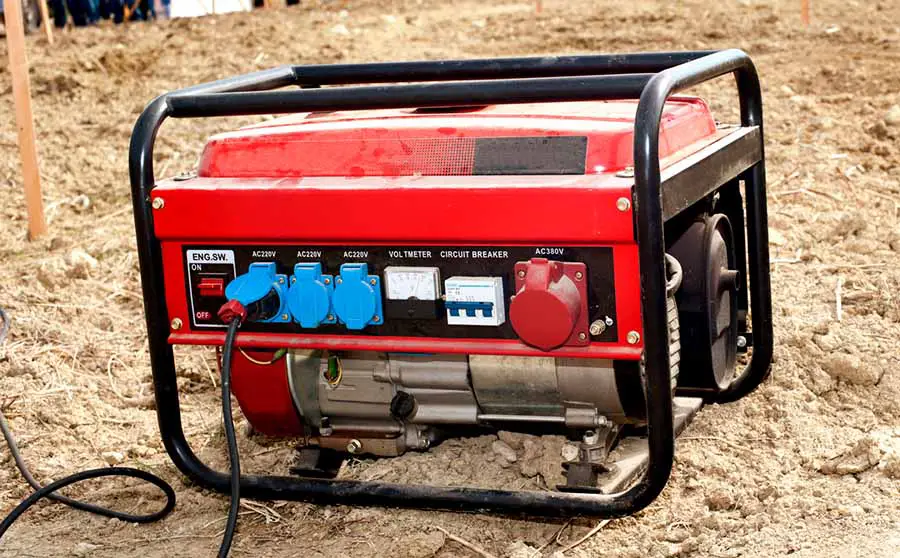
Let’s face it, pulling on a pull start is tiring and time-consuming. If you are still using a pull start and are frustrated by it, like most of us, maybe the time has come to convert your pull start to an electric starter. You can convert your generator by following these eight easy steps.
How to covert a pull start to electric in 8 easy steps.
- Check the owner’s manual
- Inspect your engine for mounting plate
- Inspect flywheel for the ring gear
- Buy the correct starter kit
- Install starter into flywheel
- Bolt starter to mounting plate
- Plug starter into outlet
- Press start
By following the eight steps mentioned above, we will quickly identify if the conversion is indeed a possibility. What happens when you have ticked most of the boxes but not all?
If it is your flywheel lacking ring gear, then the good news is that there is still hope. However, without the mounting bosses, the hope of the conversion will fade faster than you can pull start your generator.
Converting a Pull Start Generator To Electric
So, you have decided to convert your generator’s pull start to an electric starter. The strain on your arms and the time wasted trying to get your pull start generator running can be tiresome, so you may want to convert your generator to an electric start. This is a wise decision from your side and will simplify your life quite a bit.
Before we start with the conversion process, we need to establish a few things first. We need to be 100% sure that a conversion is indeed possible for your generator. How do you establish this? By following these steps:
1. Read Through Your Owner’s Manual
Browse through your owner’s manual. Usually, a section confirms a conversion from pull start to the electric starter is possible (most manufacturers design their products with this future conversion in mind).
Suppose your owner’s manual has a section about conversion, lookout for a specific starter kit part number. You will need it to perform the conversion. Most manufacturers indeed manufacture the electric starter kit, so finding the correct one should not be a problem.
Some manufacturers go the extra mile by including a step-by-step guide on how to do the conversion. Be on the lookout for this while you are going through your owner’s manual.
2. Inspect Your Engine
Inspect your generator’s engine and look for the proper mounting plates for an electric starter. If your generator already has plates with the correct mounting bosses or holes for an electric starter, the following conversion will be much more straightforward.
3. Inspect Your Flywheel
Inspect your flywheel to make sure that it has the required ring gear.
You should now have the correct information about purchasing the right electric starter kit for your generator. You have made sure that the mounting plates are drilled correctly and will allow you to mount the electric starter kit. You also confirmed that your flywheel has ring gear as required. You are now ready to start the conversion!
4. Purchase the Correct Starter Kit
When choosing an electric starter kit for your generator, there are a few things to consider. For the best results, you’ll usually want to try to find a kit from the same manufacturer as your generator, so things work better together and installation is easier.
Please do your research, and don’t be afraid to spend a little extra to get a good quality kit because it’s much better to do it right the first time than have to fix it because things keep breaking repeatedly.
Once you’ve got your starter kit, make sure it has all of the components that you’ll need to do the generator conversion from pull to electric:
- Starter motor
- Push-button or key-operated ignition
- Bolts
- Plug
- Fitting instructions
Before you start the conversion, make sure to do a checklist of your starter kit to ensure all the components listed above are in the kit. When done, proceed to follow these easy steps:
5. Install the Starter on the Flywheel and Ring Gear
Remember that the cracking gear of the electric starter should perfectly align with the slots on the flywheel gear.
6. Fix the Electric Starter to Your Generator
Use the bolts you would have received with your starter kit to install your electric starter to your generator.
7. Plug the Electric Starter Into an Outlet With an Extension Cord
Some kits will come with an internal rechargeable battery. If your starter kit came without one, just proceed to plug the electric starter into an outlet with an extension cord.
8. Press the Start Button
If you did the setup correctly, your generator should start without a problem. Always remember to unplug your starter when you are not using it.
It is as simple as that. If you follow these easy steps, you should have no real issues when it comes to converting your starter setup.
What Factors Can Prevent You From Converting Your Generator?

We have discussed the conversion from a pull start to an electric start when the circumstances are perfect for performing the conversion. There are, however, instances where you will have to make some modifications first before you can start with the conversion. Let us explore these instances:
- When there is no drilled mounting plate, after inspecting your engine to find the mounting plate, you should find one that has been pre-drilled. You are in trouble if there is no mounting plate or mounting boss. This means that you won’t be able to do the conversion. Retrofitting is an option; however, it may be very difficult to achieve as well as time-consuming, almost making it not worth the effort.
- When the flywheel has no ring gear, when taking off the cover of the flywheel and you find that there is no ring gear, do not stress! You will need to replace your flywheel with one that has a ring gear. The conversion will not work with this part being absent.
If Conversion Is Impossible, What Other Options Do You Have?
You could try and start it with an electric drill. Find a socket that fits the nut on the flywheel. You might need to remove the engine cover to try this. Be sure to have the drill set at a forward-moving position, so hopefully, your engine will start this way.
Conclusion
Using a generator pull start is the old-fashioned way of starting your generator. It places strain on your arms and rarely starts after just one pull. All of us had pulled and pulled for what seemed to be forever before our generators decided to start. It can be frustrating, to say the least.
As we’ve seen, converting your pull start to an electric starter is easy to do and the right choice in the long run. No more huffing and puffing for us. Just a turn of a key or a press of a button going forward.
Remember to check that you have the correct mounting plates first. Without the proper mounting plates, you can’t do the conversion. Then you have to look and see if your flywheel has ring gear. Suppose it does not, then you need to replace it with one that has one.
Check the manual to see if your generator is converter friendly, and make sure to purchase the correct electric starter kit as indicated via a part number. Purchase this model and make sure your kit has all the parts included.
Attach the starter to your flywheel and bolt it down using the mounting plate holes. Plug the starter into an outlet and let it rip. If you followed all the instructions, your generator should now have been converted and working perfectly.

